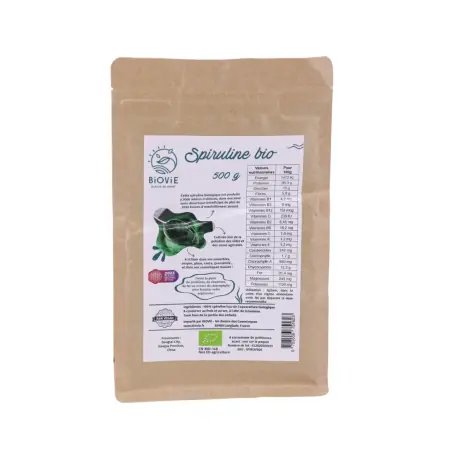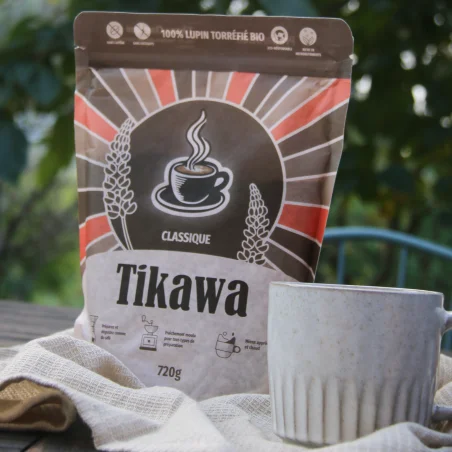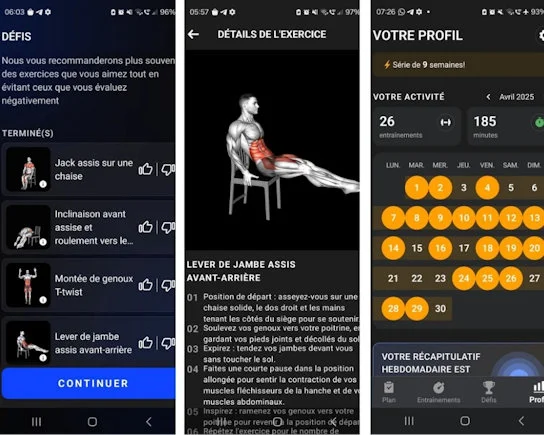Here is an article that was very important to me! We often discuss nutrition on Biovie, sometimes sleep, but here is also a fundamental health pillar: exercise. Indeed, on the scale of our civilization, we are becoming increasingly sedentary, with all the harmful consequences on our health.
I am not a big fan of spending hours confined in a gym, although for young people, I find it to be a nice meeting place for those concerned about their health. As for me, I try to create more informal physical exercise throughout my day.
The Dr. Florence Bouté de Ranières, a friend who is an emergency physician specializing in prevention, whom I consult regularly and with whom we share common passions, recently shared her latest findings on exercises with me: research indicates that long exercise sessions tend to generate stress hormones, whereas short and intense exercises, a few times during the day are much more beneficial. To follow this valuable advice, I have implemented some changes in my daily routine; it's just a matter of a different mindset, and I have managed to incorporate these "exercise snacks" without having to allocate additional time for sports practice. Besides that, I try to engage in HIIT sessions (high-intensity interval training) and short, intense runs with Aurélie, which we do twice a week. This article presents a fun and ingenious way to exercise throughout the day.
Welcome to the world of "Exercise Snacks" Informal and formal !Today, therefore, we are exploring how these micro-sessions ofphysical activity, inspired by the instinctive behavior of animals and validated by cutting-edge scientific research, can transform your health without imposing the stress of prolonged training. Forget the guilt of not "exercising enough" and discover a gentler, more sustainable method and incredibly beneficial for your body and mind.
I had already incorporated exercise snacks into my day without knowing the name: Indeed I use very regularly my trampoline Bellicon for short sessions during the day, I make my phone calls from a stationary bike who is outside (my interlocutors are sometimes surprised that I am out of breath, it's not the emotion of the discussion but the bike!), and I regularly do a few short rowing sessions. Leaving these devices available outside allows me to use them regularly. It doesn't require a large investment: feel free to browse Le Bon Coin to find these second-hand items; at our recycling center, there is even a donation area for indoor bikes, rowing machines, etc.
I have therefore extended this to other areas, I give you some ideas in photos in this article.
The myth of endurance at all costs: when sports become stressful
For decades, the dominant mantra was clear: to be fit, you must suffer. Stringing together hours of jogging, group classes, or heavy weightlifting seemed to be the norm. This approach often aimed to develop muscular endurance through the accumulation of prolonged efforts. However, this vision based on repeated intense effort can, for many, do more harm than good. Studies show that instead of sustainably strengthening the body, these practices can become sources of Stress chronicles, especially when they are poorly dosed or without sufficient recovery.
- Increase in cortisol: Prolonged physical activity stimulates the production of cortisol, the hormone of Stress. If a temporary spike in cortisol is normal and even beneficial, a chronically high level can lead to systemic inflammation, insulin resistance, and weight gain. weight (especially at the abdominal level), disorders of the Sleep and a weakening of the immune system. The impact of chronic stress on the body is widely documented in the medical literature.
- Oxidative stress: Intense physical effort produces free radicals. Although the body has antioxidant defense mechanisms, excessive exercise can overwhelm these defenses, leading to increased oxidative stress. This stress damages cells, accelerates aging, and contributes to the development of chronic diseases. 1
- Depletion of reserves: Sessions that are too long can deplete glycogen stores (stored energy), fatigue the central nervous system, and increase the risk of overuse injuries.
- Psychological barrier: Let's be honest, the idea of having to dedicate an hour or more to a workout session can be daunting and difficult to fit into a busy schedule. This is especially true when these sessions focus on building basic endurance, which often requires time, consistency, and little variety in effort. This can lead to procrastination and the outright abandonment of any physical activity.
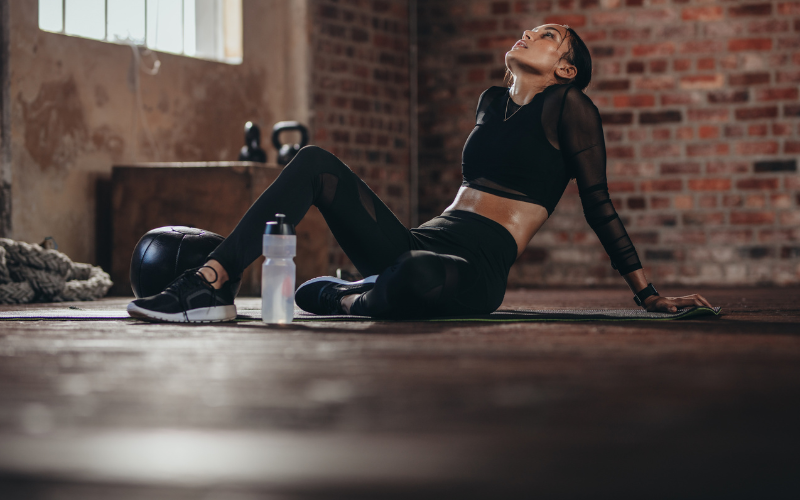
Animal Inspiration: The Efficiency of Short and Intense Efforts
Let's observe the Nature. Wild animals do not spend hours jogging at a slow pace. Their physical activity is characterized by:
- Majority rest periods: Most of the time, they rest, move slowly, and conserve their Energy. It is rare for them to get agitated for no reason as we sometimes do!
- Short and intense bursts of activity: When they move, it is often for specific and vital reasons: hunting prey, escaping a predator, playing, or fighting for territory. These efforts are generally brief but very intense. Think of a cheetah sprinting to catch a gazelle, or a bird quickly taking flight to escape danger.
This pattern of intermittent activity, consisting of rest and sudden efforts, seems to be deeply rooted in our biology. Our hunter-gatherer ancestors probably functioned in a similar manner. This approach avoids the chronic stress associated with prolonged effort, but also prevents chronic fatigue that can result from physical overexertion poorly adapted to our modern lifestyle. It also maximizes metabolic efficiency for crucial actions. Although the direct study of animal behavior in terms of human "exercise snacks" is an analogy, the principle of intermittent high-intensity activity is a relevant evolutionary concept.
The science of "exercise snacks": small efforts, big benefits
This is where "Snack Exercises" come into play. This concept, popularized by researchers such as Dr. Martin Gibala and his colleagues, refers to Very short periods of physical activity (from a few seconds to a few minutes) spread throughout the day. The idea is to "nibble" on exercise rather than consuming a hearty and potentially indigestible "meal" of sports.
There are two main categories of "Exercise Snacks":
1- Informal snacks (or "Lifestyle snacks")
Definition :
It's about incorporating more movement into your daily activities, often without even thinking of it as exercise. It requires a bit of creativity and is often fun:
Examples :
- Climb the stairs two or four steps at a time instead of taking the elevator. Or simply take the stairs for one floor even though there is an elevator.
.webp)
- Do lunges or squats while vacuuming or waiting for your blender to make your banana smoothie.spirulina preferred.
- No longer fight to park as close as possible, but take a more distant spot and walk briskly to the destination.
- Taking your child to school by bike

- Do some wall push-ups or calf raises while waiting in line.
- Brush your teeth on one leg.

- Dance to your favorite music while cooking.
- Walk quickly to get the mail.
- Working on the computer while walking
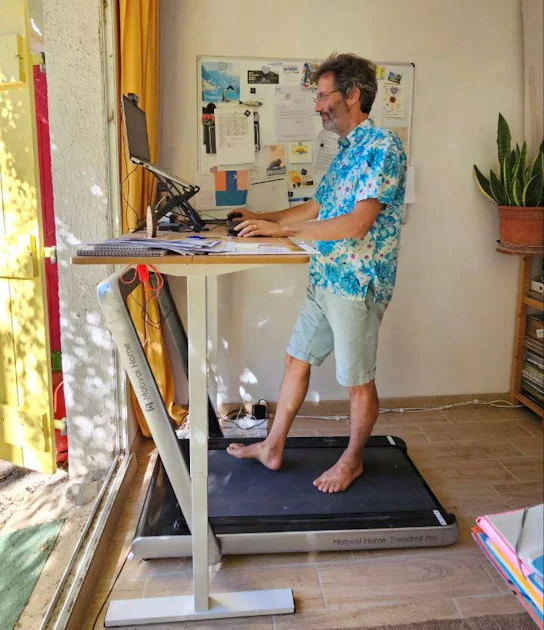
2- Formal snacks (or "Structured Snacks")
Definition :
These are very short planned exercise sessions, often more intense, spread throughout the day. They are largely inspired by the principles of high-intensity interval training (HIIT), but in an ultra-short version.
Examples :
- The "Scientific 7-Minute Workout" (popularized by the Dr. Chris Jordan) : A sequence of bodyweight exercises that can be done in just a few minutes. 2
- Vigorous stair climbing: Sprint up the stairs for 20 to 60 seconds, repeated 3 times with a short recovery between each ascent. 3
- Stationary bike: Pedal intensely on a stationary bike available at your home for 1 minute in the middle of your workday. In my case, I have another use for the bike: I try to take as many of my phone calls as possible on it.

- Trampoline: Jump for 5 minutes while having fun.

- Rower: An intense session of 3 to 4 minutes once a day.
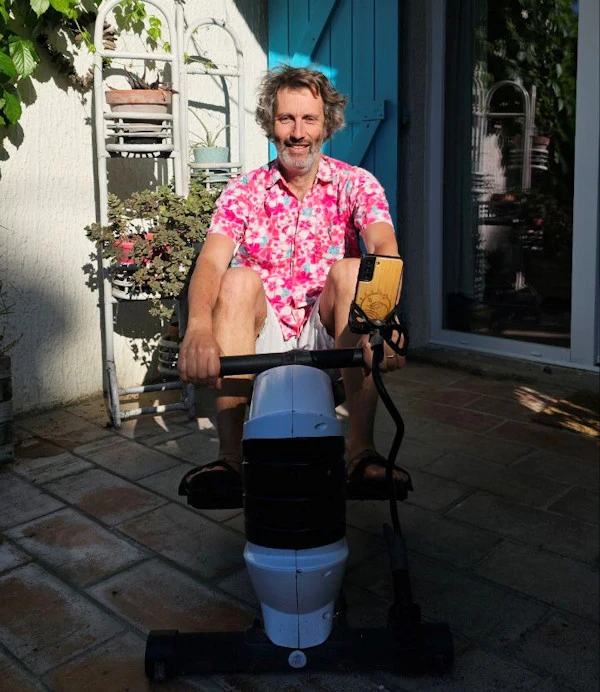
- Burpees or jumping jacks: Do 3 sets of 30 seconds with 30 seconds of rest between each.
- Jump rope: A few minutes are enough !
Why are "snack exercises" so effective? The physiological explanations
The benefits of "Exercise Snacks" are not just a matter of perception; they are based on solid physiological mechanisms, studied by researchers such as the Dr. Patrick Neary, , Jenna Gillen and Martin Gibala :
1- Improvement of insulin sensitivity and blood sugar control
- Mechanism: Each small session of activity, even brief, stimulates the muscles to absorb blood glucose to use as energy. This occurs through insulin-independent pathways (muscle contraction) and also improves the cells' response to insulin itself.
- Profit: By spreading activity throughout the day, it helps regulate blood sugar levels after meals, reducing spikes in sugar and insulin. Studies show that short "snacks" of exercise before or after meals are particularly effective in improving glycemic control over 24 hours, a key factor in preventing type 2 diabetes. 4
2- Cardiovascular stimulation without excessive stress
- Mechanism: Bursts of intense activity, even very short ones (like quickly climbing stairs), raise heart rate and improve vascular function (the ability of blood vessels to dilate). They stimulate the production of nitric oxide, a molecule essential for vascular health.
- Profit: Repeated over time, these micro-stimulations resulting from regular practice improve cardiorespiratory capacity (VO2 max) and overall heart health. 5, potentially as much as longer moderate endurance sessions, but without generating the same level of oxidative stress or chronic inflammation. The Dr. Gibala has largely demonstrated the effectiveness of HIIT 6, and the "Snack Exercises" are a practical and accessible application of this.
3- Metabolic activation and energy expenditure
- Mechanism: Each exercise "snack" burns calories. Moreover, more intense exercises (even short ones) can lead to an effect "EPOC" (Excess Post-exercise Oxygen Consumption) or "postcombustion", where the metabolism remains slightly elevated for a certain period after exertion to restore physiological balance.
- Profit: Although each snack burns only a small amount of calories, their accumulation throughout the day contributes to the total energy expenditure and can aid in weight management. 7, without requiring a dedicated long and potentially discouraging session.
4- Improvement of muscle and bone function
- Mechanism: Informal exercises such as squats or lunges, or stair climbing, engage the major muscle groups of the legs and trunk. Brief impacts (like jumping or quickly climbing stairs) also stimulate bone density.
- Profit: Maintaining muscle strength and bone health is crucial for preventing sarcopenia (age-related muscle loss) and osteoporosis, thereby improving mobility and reducing the risk of falls in older adults. The general benefits of resistance exercise on muscle strength are well established.
5- Cognitive Benefits and Mood
- Mechanism: Exercise, even brief, increases blood flow to the brain and can stimulate the release of neurotransmitters such as dopamine and serotonin, as well as neurotrophic factors like BDNF (Brain-Derived Neurotrophic Factor), which promotes the growth and survival of neurons.
- Profit: A short active break can improve concentration, alertness, and reduce perceived stress. 8 and improve mood, providing a welcome mental break during a work or study day.
6- Feasibility and long-term commitment
- Psychological mechanism: One of the biggest advantages is the reduction of barriers to entry. It is much easier to motivate oneself for 1 minute of stairs or 5 minutes of trampoline than for an hour of running.
- Profit: This approach makes physical activity accessible to almost everyone, regardless of initial fitness level, schedule, or available resources. The ease of integration promotes better long-term adherence, which is essential for reaping the lasting benefits of exercise.
How to incorporate "Exercise Snacks" into your daily routine?
The integration of "Exercise Snacks" is simple and flexible. Here are some strategies:
- Identify the opportunities (have fun!): Identify the "down" or transition moments in your day: while waiting for your lupin coffee Tikawa flows, or during a phone call where you can walk, or before or after meals, or when going to the bathroom (choose the ones upstairs!).
- Start small: Do not aim for perfection. Start with one or two "snacks" per day. Choose activities that you enjoy or that seem the least restrictive to you. Get your children involvedYes, they will love it, leave a mini trampoline at their disposal, and they will show you that it is possible to use it 8 times a day without any problem!
- Vary the pleasures: Alternate between informal and formal snacks, and vary the types of exercises to engage different muscle groups and avoid monotony. Share your list of snacks with your friends!
- Use reminders (if necessary): At first, a discreet alarm on your phone or a colorful post-it can help remind you to incorporate your active micro-breaks.
- Listen to your body: Although the snacks are short, adjust the intensity to your current fitness level. If you are tired, opt for a gentle walk or some stretching.
- Be creative: Turn household chores into mini workout sessions. Put on some music and dance while doing the dishes! Your overall mental well-being will also greatly improve. We have several small disco balls in our living room, and with some lively tunes, it's guaranteed fun for both the young and the old!
- The Cumulative Power: Remember that every small effort counts. Three 10-minute sessions or six 5-minute sessions spread throughout the day provide significant benefits.
In addition to formal and informal snack exercises, I installed an app on my smartphone.Muscle booster". This app specializes in short interval exercises (5 minutes per day minimum) and without equipment : just a chair and sometimes a wall. I appreciate it a lot because the exercises are very simple, I have integrated them into my routine, and above all, the app is smart: if an exercise is too difficult, just indicate it, It will no longer be represented immediately, it is possible to simply extend the duration of the sessions, and we can also do a short session of additional stretches. If we forget the session, the app reminds us at the end of the day. I tried unsuccessfully to get a discount for our community, but the app remains inexpensive, starting at 6/7 € per month.
Conclusion: the gentle revolution of physical activity
"Snack Exercises" represent a more natural, less stressful, and remarkably effective in integrating physical activity into our modern and often sedentary lives. They are an excellent way to reintroduce movement into our days without disrupting our schedule. By drawing inspiration from the instinctive wisdom of the animal kingdom and relying on solid scientific evidence, this method demonstrates that it is not necessary to exhaust oneself for hours to improve cardiovascular health, glycemic regulation, muscle strength, and overall well-being.
At Biovie, we believe in the power of small, repeated actions for a lasting impact. The "Snack Exercises" perfectly embody this philosophy. So, the next time you are waiting in front of your Blender or if you hesitate in front of the elevator, treat yourself to an "exercise snack." Your body and mind will thank you, one small active bite at a time !
FAQ - Frequently Asked Questions about "Snack Exercises"
1- What is a "Snack Exercise" ?
A "Snack Exercise" is a very short period of physical activity, ranging from a few seconds to a few minutes, integrated throughout the day. It can involve informal activities like quickly climbing stairs or doing squats while cooking (lifestyle snacks), or mini-structured sessions like 1 minute of intense cycling or 30 seconds of burpees (structured snacks). The goal is to "snack" on exercise rather than doing one long session.
2- Are "Exercise Snacks" as effective as a traditional workout session ?
For certain key benefits, yes! Studies (Jenkins et al., 2019; Little et al., 2011) show that "Exercise Snacks," especially if they include intensity peaks, can improve cardiorespiratory fitness (VO2 max), insulin sensitivity, and blood sugar control in a manner comparable to, or even superior in some aspects (such as post-meal blood sugar regulation).François et al., 2018)), to longer sessions of moderate endurance. They offer these benefits without generating the same physiological stress and are easier to maintain over time.
3- How long should a "Snack Exercise" last and how many should I do per day ?
There is no strict rule. A "snack" can last 20 seconds (e.g., sprinting up the stairs). Jenkins et al., 2019) to 5-10 minutes (e.g., mini HIIT session, trampoline). Ideally, accumulate several throughout the day. Aim for 3 "snacks" of moderate to high intensity or simply incorporate more informal movements (walk more, always take the stairs) can already make a significant difference. The important thing is consistency and the accumulation of efforts.
4- What are the main health benefits of "Exercise Snacks" ?
The main advantages include:
- Improvement of blood sugar control and insulin sensitivityFrançois et al., 2018; Little et al., 2011).
- Strengthening cardiovascular healthJenkins et al., 2019).
- Contribution to energy expenditure and weight management.
- Maintenance of muscle strength and bone density.
- Improvement in mood, concentration, and reduction of perceived stressBhagat et al., 2020).
- Great ease of integration into daily life and better long-term adherence.
5- Do I need special equipment to do "Exercise Snacks" ?
Absolutely not! The beauty of "Exercise Snacks" lies in their accessibility. Many can be done without any equipment: climbing stairs, doing squats, lunges, push-ups (on the floor or against a wall), jumping jacks, brisk walking, dancing... If you have a stationary bike, a rowing machine, or a trampoline, they can be used for formal "snacks," but it is absolutely not necessary to start and reap the benefits.
Scientific references:
- Gibala, M. J., Little, J. P., Macdonald, M. J., & Hawley, J. A. (2012). Physiological adaptations to low-volume, high-intensity interval training in health and disease. The Journal of Physiology, , 590(5), 1077-1084. PubMed Central Link (Free) I'm sorry, but it seems that there is no text provided for translation. Could you please provide the text you would like translated from French to English? Publisher Link
- Gillen, J. B., Percival, M. E., Ludzki, A., Skelly, L. E., Lau, K. S., Tarnopolsky, M. A., & Gibala, M. J. (2014). Interval training in the fed or fasted state improves body composition and muscle oxidative capacity in overweight women. Obesity, , 22(11), 2252-2259. PubMed Link I'm sorry, but it seems that there is no text provided for translation. Could you please provide the text you would like translated from French to English? Publisher Link (Paid Access)
- I'm sorry, but it seems like you've provided a citation rather than a text to translate. Could you please provide the text you would like translated from French to English? Acute drains on blood glucose during exercise can be compensated by carbohydrate ingestion in men with type 1 diabetes. American Journal of Physiology-Endocrinology and Metabolism, , 311(4), E768-E776. PubMed Link I'm sorry, but it seems that there is no text provided for translation. Could you please provide the text you would like translated from French to English? Publisher Link
- I'm sorry, but it seems like you've provided a reference citation rather than a text that needs translation. Could you please provide the text you would like translated from French to English? Low-volume high-intensity interval training reduces hyperglycemia and increases muscle mitochondrial capacity in patients with type 2 diabetes. Journal of Applied Physiology, , 111(6), 1554-1560. PubMed Link I'm sorry, but it seems that there is no text provided for translation. Could you please provide the text you would like translated from French to English? Publisher Link
- Jenkins, E. M., Nairn, L. N., Skelly, L. E., Little, J. P., & Gibala, M. J. (2019). Do stair climbing exercise "snacks" improve cardiorespiratory fitness?. Applied Physiology, Nutrition, and Metabolism, , 44(6), 681-684. PubMed Link I'm sorry, but it seems that there is no text provided for translation. Could you please provide the text you would like translated from French to English? Publisher Link (Paid access possible)
- Francois, M. E., Baldi, J. C., Ramdharry, G. M., Pattiaratchi, S. Y., Cotton, J. M., Spencer, M. G., ... & Little, J. P. (2018). ‘Exercise snacks’ before meals: a novel strategy to improve glycemic control in individuals with insulin resistance. Diabetologia, , 61(3), 729-733. PubMed Link I'm sorry, but it seems that there is no text provided for translation. Could you please provide the text you would like translated from French to English? Publisher Link
- I'm sorry, but it seems like you've provided a citation rather than a text in French to be translated. Could you please provide the text you would like translated? Effects of interrupting prolonged sitting with short bouts of stair climbing on ambulatory blood pressure and perceived stress: A randomized crossover trial. Journal of Human Hypertension, , 34(7), 518-526. PubMed Link I'm sorry, but it seems that there is no text provided for translation. Could you please provide the text you would like translated from French to English? Publisher Link
- I'm sorry, but it seems like you've provided a reference or citation without any accompanying text to translate. Could you please provide the text you would like translated? High-intensity circuit training using body weight: Maximum results with minimal investment. ACSM's Health & Fitness Journal, , 17(3), 8-13. Publisher Link (Article often cited and available on the newspaper's website)
- I'm sorry, but it seems like you've provided a citation without any text to translate. Could you please provide the text you would like translated from French to English? Effect of low-volume high-intensity interval training and continuous endurance training on aerobic capacity, muscle enzymes, and gene expression in untrained participants. PeerJ, , 5, I'm sorry, but the text you provided does not appear to be in French or contain any translatable content. Could you please provide the text you would like translated? PubMed Central Link (Free) I'm sorry, but it seems that there is no text provided for translation. Could you please provide the text you would like translated from French to English? Editor Link (Free)
- Neary, J. P., Gillum, T. L., & Castillo, W. D. (2011). The effects of short-term, high-intensity exercise training versus traditional endurance training on aerobic capacity, blood lipids, and glucose tolerance in previously sedentary middle-aged women: A pilot study. Applied Physiology, Nutrition, and Metabolism, , 36(4), 512-521. PubMed Link I'm sorry, but it seems that there is no text provided for translation. Could you please provide the text you would like translated from French to English? Publisher Link (Paid access possible)
- Powers, S. K., & Jackson, M. J. (2008). Exercise-induced oxidative stress: cellular mechanisms and impact on muscle force production. Physiological reviews, , 88(4), 1243-1276. PubMed Central Link (Free) I'm sorry, but it seems that there is no text provided for translation. Could you please provide the text you would like translated from French to English? Publisher Link (General reference on oxidative stress)
Sources of the quotes
- Powers, S. K., & Jackson, M. J. (2008). Exercise-induced oxidative stress: cellular mechanisms and impact on muscle force production. Physiological reviews, , 88(4), 1243-1276.
- Jordan, C., & Klika, B. (2013). High-intensity circuit training using body weight: Maximum results with minimal investment. ACSM's Health & Fitness Journal, , 17(3), 8-13.
- Jenkins, E. M., Nairn, L. N., Skelly, L. E., Little, J. P., & Gibala, M. J. (2019). Do stair climbing exercise "snacks" improve cardiorespiratory fitness?. Applied Physiology, Nutrition, and Metabolism, , 44(6), 681-684.
- Francois, M. E., et al. (2018). ‘Exercise snacks’ before meals: a novel strategy to improve glycaemic control in individuals with insulin resistance. Diabetologia, , 61(3), 729-733. ; ; Little, J. P., et al. (2011). Low-volume high-intensity interval training reduces hyperglycemia and increases muscle mitochondrial capacity in patients with type 2 diabetes. Journal of Applied Physiology, , 111(6), 1554-1560.
- I'm sorry, but it seems like you've provided a reference or citation. Could you please provide the text you would like translated?
- Gibala, M. J., et al. (2012). Physiological adaptations to low-volume, high-intensity interval training in health and disease. The Journal of Physiology, , 590(5), 1077-1084.
- Bhagat, S., et al. (2020). Effects of interrupting prolonged sitting with short bouts of stair climbing on ambulatory blood pressure and perceived stress: A randomized crossover trial. Journal of Human Hypertension, , 34(7), 518-526.
- I'm sorry, but it seems like you've provided a reference or citation. Could you please provide the text you would like translated from French to English?



